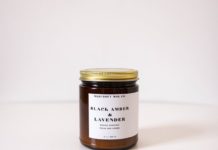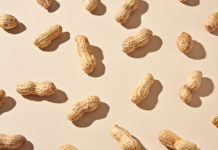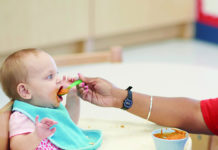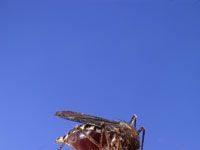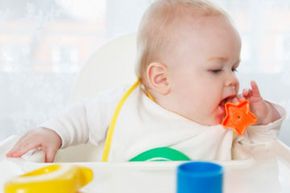 “Image Gallery: Parenting It’s sometimes a good idea to make your own choke tube to test toys for size and safety. See more parenting pictures.Lynn James/The Image Bank/Getty Images
“Image Gallery: Parenting It’s sometimes a good idea to make your own choke tube to test toys for size and safety. See more parenting pictures.Lynn James/The Image Bank/Getty Images
In 2007, many U.S. parents were stunned to discover that a country with tight regulations regarding cell-phone bandwidth, stock trades and use of the term "organic" was doing rather little to ensure the safety of children’s toys. When 45 million kids’ products were recalled as hazardous that year, it became pretty clear: There’s no guarantee that a toy you buy at the store is going to be safe [source: USPIRG].
The situation has started to improve since then. The Consumer Product Safety Commission has more resources for toy oversight and stricter regulations to enforce. But toys are still being pulled off the shelves by the millions for problems like toxicity and choking potential. In 2009, U.S. Public Interest Research Groups (PIRG) found toys that had too much lead, choking-size components and ear-damaging noise levels [source: USPIRG]. Toys on 2009’s "10 Worst Toys" list by watchdog group World Against Toys Causing Harm (WATCH) include two action figures — Batman and Wolverine – with, respectively, 1- and 1.5-inch (2.5 and 3.8-centemeter) protrusions pointy enough to puncture an unsteady toddler; a Curious George book for newborns with choking-size beads attached to it; and a plastic music set for babies with a drumstick long enough to get stuck in a tiny throat.
Even with the best precautions in place, we’ll never be looking at a world in which every toy in the toy store has been thoroughly tested and approved by an independent, nonprofit, "we heart kids" organization. Ultimately, responsibility for toy safety, as with most other childhood issues, falls in parents’ laps.
That means parents need the knowledge to make good choices. In this article, we’ll get into the most basic and most important toy-safety issues. We’ll find out which toys are right for the youngest babies and what should be kept out of reach, how to make older-kids’ toys as safe as possible, and what to look for on toy packaging before you buy.
The most common toy hazard is one that affects infants. It calls for a heightened awareness of age-specific behaviors.
Age Appropriate Toys
It doesn’t take a degree in developmental psychology to know that not all toys are right for all age groups. An 18-month-old wouldn’t have much use for a tricycle. A rattle might not particularly intrigue a 6-year-old.
The most important reason for age ranges on toy packaging, though, is safety. Job one in keeping kids safe is following those age recommendations, especially when your child is an infant: One of the biggest toy dangers is choking, and infants are most at risk.
If you’re a parent, you know why: Babies put everything, absolutely everything, in their mouths. Anything small enough to get lodged in a baby-size throat poses a choking or suffocation risk. Public Interest Research Groups (PIRG) reports that in 2008, three children died this way, and between 1990 and 2007, nearly 200 children did [source: USPIRG]. It’s no joke: Small toys or removable parts of toys are not for children under the age of 3. For these "oral age" kids, anything less than 1.75 inches (4.45 centimeter) in diameter is inappropriate [source: USPIRG].
Most toys have age guidelines and related warnings printed prominently on the packaging, so you typically won’t have to guess (in fact, if there are no ranges, you might want to avoid that toy). Age-inappropriate toys, however, do slip by, so it’s important to know what to look for in terms of what’s right for your child’s stage of development. A few tips:
- Small parts — While they’re banned in toys for babies and toddlers, there’s still some risk of choking in kids all the way up to age six, so use caution. Pay attention to "small parts" warnings on all toys. Consider purchasing or making a "choke tube" to test toys for size safety, and check stuffed animals for loose pieces (eyes, noses) that could come loose and become a choking hazard.
- Cords — Cords, strings and other tethers pose a strangulation risk for small children, especially under 1 year old. Toys with cords and strings should be saved for older children.
- Electric Heating — A toy that produces heat, like a baking set, is not safe for children under 8 years old. Young children are more likely to use it improperly and get burned.
- Handles — A long-handled or long, narrow toy (like a drumstick) is only for children older than 4. A younger child is more likely to stick it in his mouth and choke.
- Guns — Toys guns like pellet guns, cap guns and BB guns can, literally, put an eye out. They are not appropriate for children younger than 16.
If you come across a toy you believe is unsafe, don’t hesitate to tell the Consumer Product Safety Commission. Go to CPSC: Report Unsafe Products.
Following age recommendations is a good start in protecting kids. But there’s at least one toy component that’s dangerous for children of all ages.
Turn That Down!
Check packaging for warnings related to volume. Toys that produce noise above 85 decibels — 65 for close-range — can damage hearing. They’re mostly banned, but they’re still out there [source: USPIRG].
Avoiding "Toxic" Toys
While small numbers of toys are fairly consistently pulled from shelves due to choking hazards, massive toy recalls in 2007 shed rather dramatic light on a different issue entirely: toxicity.
The biggest offenders in children’s products in general are lead and phthalates. Both are known poisons that can have a more profound effect on children than on adults. Anything over trace amounts of lead has been banned in toys. Lead is a neurotoxin that can cause brain damage, kidney damage and an array of other ailments. Phthalates are a more controversial issue, but studies have indicated they could cause reproductive problems and early puberty, and six types of phthalates are banned or limited in children’s products [source: MSNBC].
Even with new, stricter regulations in place since a system overhaul in 2008, the CPSC recalled well over a million toys for toxicity issues in 2009 [source: USPIRG]. The PIRG found a piece of toy jewelry that was 71 percent lead by weight, and two toys that violated phthalate levels that year [source: USPIRG]. So, as always, parents must be vigilant: Look for "nontoxic" labels on art supplies and painted toys (the standard "ASTM D-4236" on crayons and paints is a good sign, too); and avoid even the most well-intentioned older hand-me-downs, since a toy from 10 years ago may not meet current toxicity standards.
That’s actually a good toy rule in general, despite its financial foolhardiness: "Thanks, but no, thanks" to the bag of toys from your great aunt. Safety standards have improved over the years, so when it comes to kids’ toys, newer is probably better.
Details like age ranges and toxicity standards are important, but in the end, no parent can catch every safety violation, and no child will always play with a toy as the manufacturer intended. So the most effective safety measure is a pretty simple one: Always supervise playtime. It’s the best way to know your kids’ toys are safe.
Remember the Obvious
- Keep balloons, plastic wrapping, broken toys, fireworks and matches out of children’s reach.
- Kids’ fabric should be flame retardant or flame resistant.
- If a wooden toy gets splintery or sharp, sand it down.
- Plush toys should be washable so they can be kept clean and hygienic.
- Darts or arrows in toys should have soft, blunt tips.
Read More
Lots More Information
Related Articles
- How to Choose Toys for a Child
- What’s with China and lead poisoning?
- Do vaccines cause autism?
Sources
- Choosing Safe Toys. KidsHealth.http://kidshealth.org/parent/firstaid_safe/home/safe_toys.html
- For Kids’ Sake: Think Toy Safety. U.S. Consumer Product Safety Commission.http://www.cpsc.gov/cpscpub/pubs/281.html
- Trouble in Toyland: The 24th Annual Survey of Toy Safety. U.S. Public Interest Research Groups. November 24, 2009.http://www.uspirg.org/home/reports/report-archives/product-safety/product-safety-reports/trouble-in-toyland-the-24th-annual-survey-of-toy-safety
- Toy Hazards to Watch Out For. World Against Toys Causing Harm.http://www.toysafety.org/toyHazards.shtml






